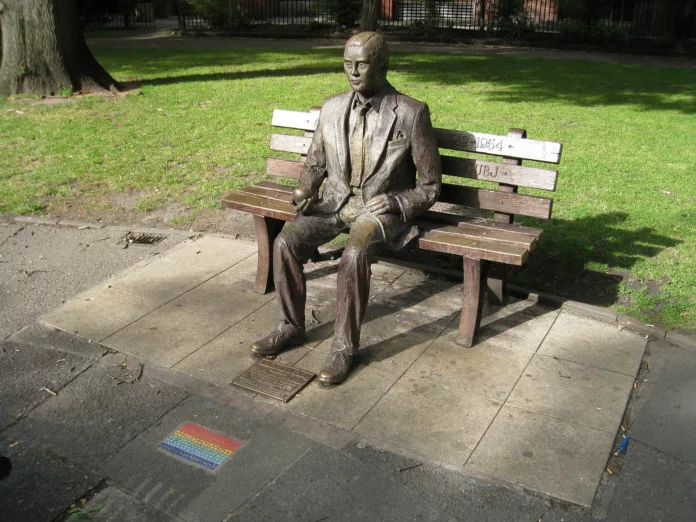In the heart of Manchester, a city known for its industrial history and innovation, stands a poignant memorial that pays tribute to one of the greatest minds of the 20th century – Alan Turing. The Alan Turing Memorial, a remarkable bronze statue situated in Sackville Park, serves as a powerful reminder of Turing’s groundbreaking contributions to computer science, code-breaking during World War II, and his enduring legacy as a pioneer of artificial intelligence. In this article, we will explore the life and achievements of Alan Turing, as well as the significance of the memorial that honours his memory.
Alan Turing: A Brief Biography
Alan Mathison Turing, born on June 23, 1912, in London, was a brilliant mathematician, logician, and computer scientist. His groundbreaking work in the field of theoretical computer science laid the foundation for modern computing. Turing’s most famous achievement was his concept of the “Turing machine,” a theoretical device that could simulate the logic of any computer algorithm. This concept became the basis for modern computers and the field of artificial intelligence.
Code-Breaking Hero
During World War II, Turing’s exceptional intellect and code-breaking prowess played a pivotal role in deciphering the German Enigma code. His work at Bletchley Park, a top-secret British code-breaking centre, contributed significantly to Allied victory and saved countless lives. Turing’s decryption efforts helped intercept crucial military intelligence, enabling the Allies to anticipate German actions.
Persecution and Tragedy
Despite his remarkable achievements, Alan Turing faced persecution due to his homosexuality, which was criminalised in the United Kingdom at the time. In 1952, he was convicted of “gross indecency” and subjected to hormone therapy as an alternative to imprisonment. Tragically, Turing died by suicide in 1954 at the age of 41. His untimely death marked a profound loss to the world of science and mathematics.
The Alan Turing Memorial
The Alan Turing Memorial, unveiled in 2001, stands as a powerful symbol of remembrance and recognition. The bronze statue, created by renowned sculptor Glyn Hughes, depicts Turing holding an apple, a nod to the legend that he died by biting into a cyanide-laced apple. The statue’s intricate design incorporates various elements, including code, mathematical symbols, and a large Turing machine at its base.
A Symbol of Inclusivity
The memorial serves as a tribute not only to Turing’s scientific achievements but also to his perseverance in the face of prejudice. Turing’s unjust persecution due to his sexuality remains a reminder of the importance of inclusivity and acceptance in society. In 2013, the United Kingdom officially pardoned Turing, acknowledging the grave injustice he suffered.
The Alan Turing Memorial in Manchester is more than a statue; it’s a symbol of intellectual prowess, resilience, and the enduring fight for equality. Turing’s contributions to computer science and code-breaking continue to shape our modern world. As we reflect upon the life and legacy of Alan Turing through this memorial, we are reminded of the importance of honouring the contributions of all individuals, regardless of their backgrounds or identities. The Alan Turing Memorial stands as a testament to the enduring impact of his work and the ongoing quest for knowledge and justice.

